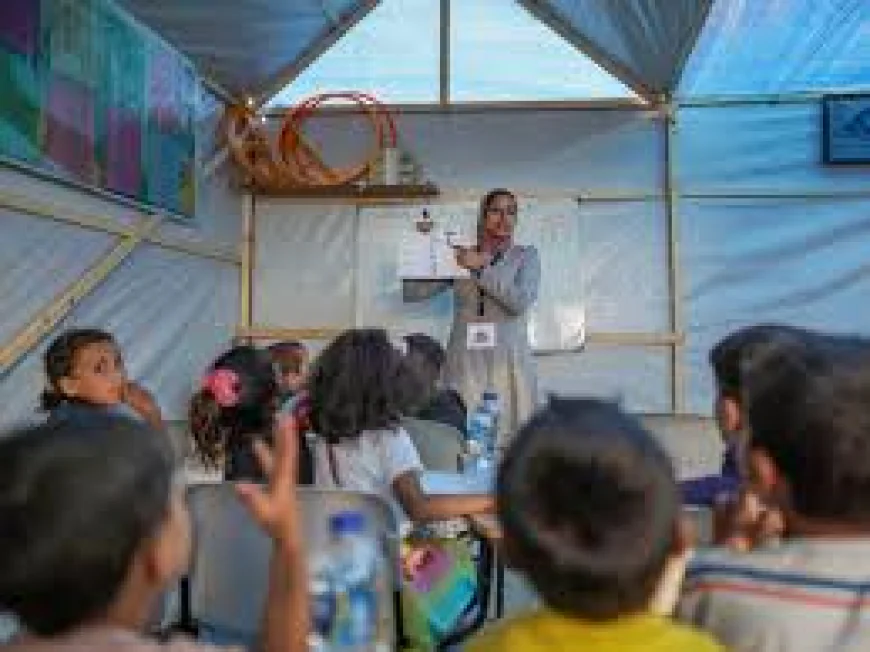From Shelters to Schoolwalls - Gaza Children Resume Classes
The United Nations Relief and Works Agency for Palestine Refugees (UNRWA) has resumed classes in Gaza after nearly two years of educational paralysis. But despite the hopeful reopening, many children remain locked out as schools double as shelters for displaced families and infrastructure lies in ruins.

UNRWA Re-opens Schools Amid Ruins, but Many Children Still Left Out
After years of conflict and disruption, Gaza’s children are finally hearing the sound of school bells again. The United Nations Relief and Works Agency (UNRWA) has cautiously reopened parts of its education program, offering a lifeline to thousands of Palestinian students. Yet amid the ruins, overcrowded shelters, and scarce resources, not every child will find a place in class.
Back to School — What’s Happening Now
UNRWA says around 300,000 students are expected to return to learning, marking a critical step toward restoring normalcy.
-
Roughly 10,000 children will attend in-person classes in the few usable schools and shelters.
-
The remainder will rely on remote or blended learning as infrastructure repairs continue.
-
More than 8,000 teachers have been mobilized to support the effort.
UNRWA’s Commissioner-General stressed that “it is absolutely impossible to have two years without schooling,” underscoring the urgency of restoring education in one of the world’s most devastated regions.
Major Obstacles to Full Return
1. Infrastructure devastation
Over 90% of Gaza’s schools have sustained damage, leaving many buildings unfit for use. UNRWA faces a colossal task to rebuild classrooms and provide safe spaces for children to learn again.
2. Schools used as shelters
Many of Gaza’s school buildings currently serve as temporary homes for displaced families, reducing the number of available classrooms. DW reports that parents are desperate to register their children despite severe overcrowding and limited space.
3. Learning loss and access gaps
UNICEF estimates that only one in six children in Gaza currently have access to structured learning. UNRWA has repeatedly warned of a growing “lost generation” if education is not restored for all.
4. Humanitarian blockade and broader crisis
The broader humanitarian context remains dire. Gaza’s population relies heavily on aid, with 95% of residents depending on humanitarian assistance. Ongoing blockades continue to delay the rebuilding of schools and distribution of educational materials.
Why This Matters
Education is more than a return to normalcy, it’s a tool for recovery. For Gaza’s children, classrooms represent hope, stability, and healing in the aftermath of war. Without access to learning, the region risks losing a generation to trauma and illiteracy.
UNRWA has emphasized that sustainable peace and reconstruction must include a commitment to education. As one agency official warned, “Without schools, there is no future.”
What Happens Next
UNRWA has appealed for urgent funding to rebuild schools, restore damaged facilities, and expand remote learning access.
-
Safe passage and reliable power are essential to sustain in-person and online lessons.
-
International donors are being urged to bridge funding gaps and ensure long-term educational continuity.
-
Meanwhile, UNRWA continues to coordinate with humanitarian partners to provide psychosocial support and learning materials to affected children.
Despite the challenges, the return of even a fraction of Gaza’s students marks a symbolic victory, a sign that learning, though battered, refuses to die.
Source;
DWTVNews


